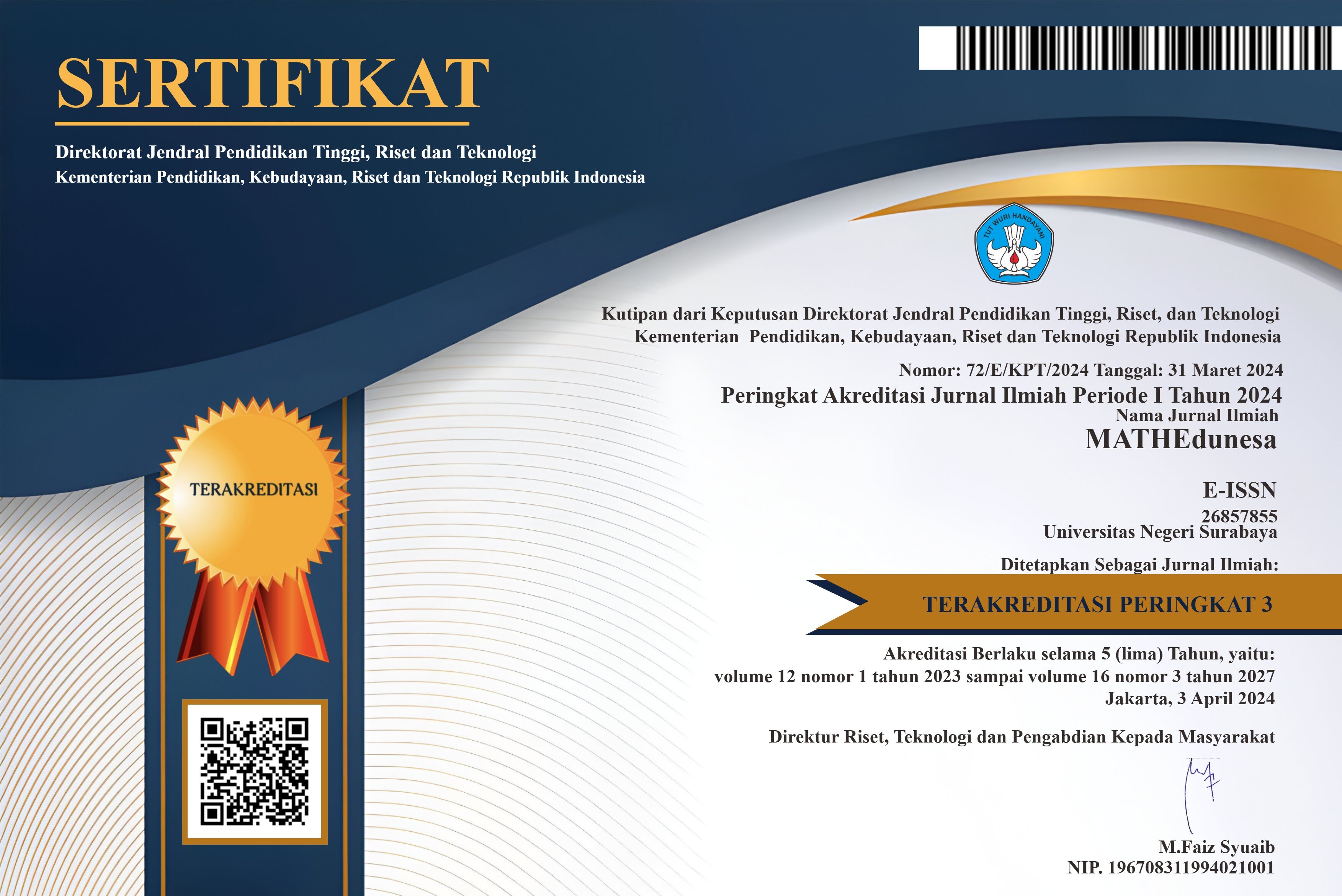Berpikir Matematis Siswa SMP dalam Menyelesaikan Masalah Aritmetika Sosial Ditinjau dari Self-Efficacy
DOI:
https://doi.org/10.26740/mathedunesa.v14n2.p350-369Abstract
In solving problems, students use unique methods according to their mathematical thinking. Their success in completing assignments is influenced by self-efficacy. This research aims to describe students' mathematical thinking in solving social arithmetic problems in terms of high, medium, and low self-efficacy. This descriptive qualitative research involved eighth-grade students selected based on self-efficacy questionnaires, high and equivalent math ability tests, and good communication skills for interviews. Data collection methods included self-efficacy questionnaires, math ability tests, problem-solving tasks, and interviews. Data were analyzed through data reduction, data presentation, and drawing conclusions. Results show that in the entry phase at the specialization stage, students with high, medium, and low self-efficacy identify all available information, including what is known and what is asked in the question. They then identify the problem and develop and test potential strategies to solve it. In the attack phase at the conjecturing stage, they propose hypotheses, correct incorrect ones until accurate, and test them to solve the problem. At the justification stage, they provide logical reasons for their hypotheses and feel confident that each step taken is correct. In the review phase at the generalization stage, student with high self-efficacy does not check the compatibility of her answers with the questions or solving steps, whereas students with medium and low self-efficacy do it completely. Additionally, does all of student report difficulties when calculating large discounts.
Downloads
Downloads
Published
Issue
Section
 Abstract views: 95
,
Abstract views: 95
, PDF Downloads: 123
PDF Downloads: 123




